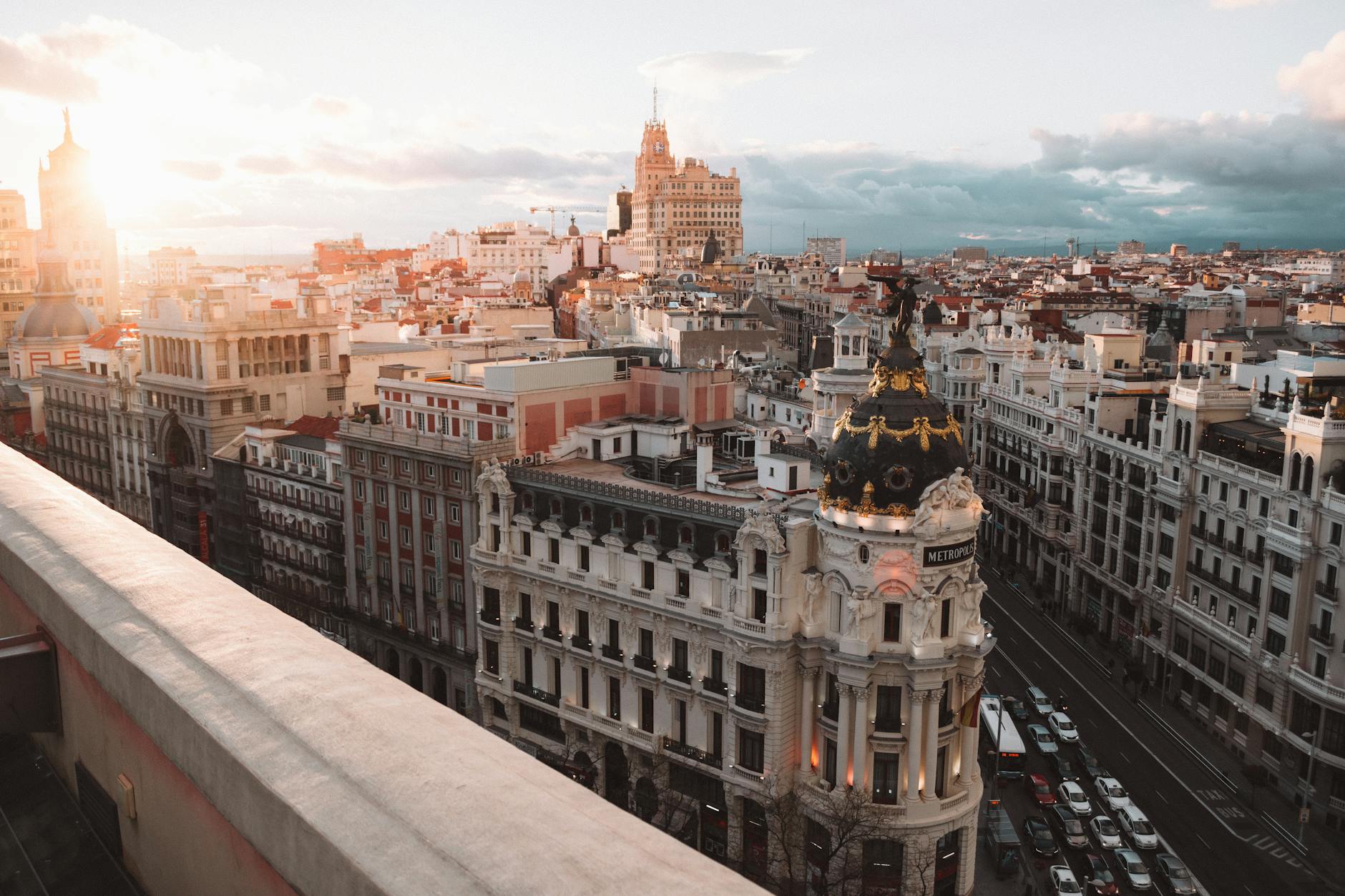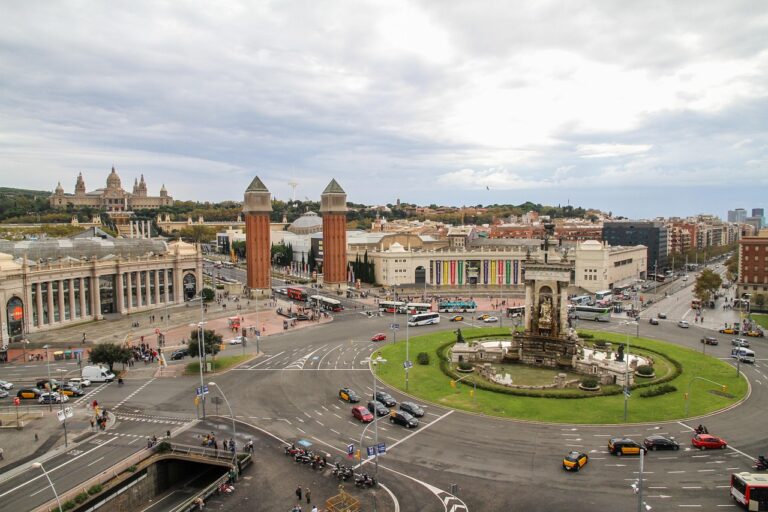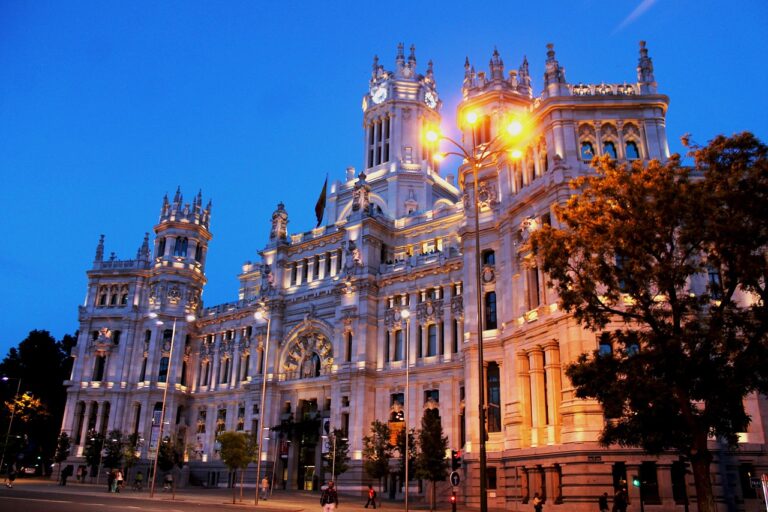Unveiling Spain’s Splendors: Your Ultimate Guide to Unforgettable Destinations
Explore the vibrant culture, rich history, and breathtaking landscapes that make Spain a top global travel destination.
Highlights of Spain’s Must-Visit Destinations
- Architectural Marvels: Discover the unique designs of Gaudí in Barcelona and the intricate Moorish palaces of Granada and Seville.
- Cultural Immersion: Experience the lively flamenco of Seville, the world-class museums of Madrid, and the ancient traditions woven throughout the country.
- Diverse Landscapes: From the sunny beaches of the Costa del Sol and Mallorca to the majestic Sierra Nevada mountains, Spain offers a setting for every traveler.
Spain, a nation celebrated for its vibrant culture, profound history, and stunning natural beauty, stands as a premier global travel destination. Whether you are captivated by its iconic architecture, sun-kissed coastlines, or historic cities, Spain offers an unparalleled diversity of experiences. This comprehensive guide delves into the best places to visit in Spain, enriched with compelling insights and structured for optimal discoverability, ensuring your travel planning is both inspiring and practical.
Madrid: The Royal Heartbeat of Spain
As the bustling capital, Madrid is the epicenter of Spain’s cultural, artistic, and nocturnal life. It masterfully blends historical grandeur with modern vibrancy, making it ideal for both day and night exploration. Art aficionados flock to the world-renowned museums, while the city’s lively plazas and tapas bars offer a taste of authentic Spanish daily life.
Cultural Jewels and Urban Charms
Madrid is home to an impressive array of world-class museums, including the Prado Museum, the Reina Sofía, and the Thyssen-Bornemisza, collectively known as the “Golden Triangle of Art.” These institutions house masterpieces by Spanish and international artists, offering a profound journey through art history.
 A view of the Puerta de Alcalá, a neoclassical triumphal arch in Madrid.
A view of the Puerta de Alcalá, a neoclassical triumphal arch in Madrid.
Iconic Landmarks and Green Oases
Beyond its museums, Madrid boasts architectural splendor. The opulent Royal Palace, the official residence of the Spanish Royal Family (though primarily used for state ceremonies), stands as a testament to the country’s rich monarchical history. Nearby, the sprawling Retiro Park provides a peaceful escape with its manicured gardens, a grand artificial lake, and the crystal-clear Palacio de Cristal.
Madrid’s Culinary and Social Pulse
The city’s culinary scene is a delight, from traditional tapas bars in neighborhoods like La Latina to upscale dining establishments. The Plaza Mayor and Puerta del Sol are central hubs pulsating with energy, perfect for people-watching and soaking in the local atmosphere. Madrid is also perfectly situated for enriching day trips to nearby historical treasures.
Barcelona: A Symphony of Art and Coastal Beauty
Barcelona, the capital of Catalonia, is a city that effortlessly blends cosmopolitan energy with an unparalleled artistic heritage. It is a feast for the senses, where modern life and ancient history intertwine seamlessly. Visitors are drawn to the whimsical creations of Antoni Gaudí, which have become synonymous with the city’s identity.
Gaudí’s Enduring Legacy
The architectural genius of Antoni Gaudí is visible throughout Barcelona, with his extraordinary designs shaping the city’s skyline. The Sagrada Familia, a breathtaking basilica that has been under construction for over a century, stands as an awe-inspiring symbol of innovation and devotion. Park Güell, a whimsical public park system composed of gardens and architectonic elements, offers vibrant mosaics and imaginative structures, providing panoramic views of the city.
 A panoramic view of Barcelona’s distinctive urban landscape with the Sagrada Familia in the distance.
A panoramic view of Barcelona’s distinctive urban landscape with the Sagrada Familia in the distance.
From Bustling Boulevards to Historic Alleys
Strolling down Las Ramblas, Barcelona’s famous tree-lined pedestrian street, invites visitors to experience lively street performances, local markets like La Boqueria, and quaint cafés. The Gothic Quarter (Barri Gòtic) offers a stark contrast with its narrow, winding medieval alleys and historic squares, including the charming Plaça Reial.
Mediterranean Relaxation and Culinary Delights
The city’s Mediterranean coastline offers beautiful beaches such as Barceloneta, perfect for relaxation after a day of sightseeing. Barcelona’s culinary scene is equally diverse, ranging from traditional Catalan dishes to avant-garde cuisine, ensuring a delightful experience for every palate.
Seville: The Soul of Andalusia
Seville, the capital of Andalusia, embodies the passion and spirit of southern Spain. Renowned for its festive atmosphere, striking Moorish architecture, and the fiery art of flamenco, Seville offers a truly immersive cultural experience. Visiting during iconic festivals like Semana Santa (Holy Week) or Feria de Abril provides an even deeper dive into Spanish traditions.
Architectural Wonders and Flamenco Rhythms
The city’s architectural wonders include the magnificent Seville Cathedral, the largest Gothic cathedral in the world and home to the tomb of Christopher Columbus. Adjacent to it lies the Royal Alcázar of Seville, a stunning palace complex with intricate Mudejar artistry and serene gardens, reflecting centuries of diverse influences.
Picturesque Quarters and Vibrant Plazas
Walking through the charming Barrio Santa Cruz, with its narrow cobbled streets and picturesque courtyards, feels like stepping back in time. The grand Plaza de España, a semicircular brick building adorned with colorful ceramic tiles, is a truly remarkable architectural marvel perfect for a leisurely stroll or boat ride.
Granada: The Jewel of Moorish Spain
Nestled at the foot of the Sierra Nevada mountains, Granada is a city steeped in history and captivating beauty, perfectly blending historical architecture with striking natural scenery. Its crown jewel, the Alhambra, stands as a poetic testament to Spain’s layered past.
The Alhambra: A Palace of Dreams
The Alhambra, a UNESCO World Heritage Site, is a breathtaking palace and fortress complex that showcases exquisite Moorish architecture and serene gardens. It comprises the Alcazaba fortress, the Nasrid Palaces, and the Generalife gardens, each offering a glimpse into the sophisticated artistry of the Nasrid dynasty. The name “Alhambra” translates to red-tinted in Arabic, reflecting its stunning terracotta colors, especially pronounced at golden hour.
Historic Neighborhoods and Panoramic Views
Besides the Alhambra, Granada’s charming Albaicín neighborhood is a must-see. This ancient Moorish quarter, with its narrow cobbled streets, offers mesmerizing views of the Alhambra, particularly from the Mirador de San Nicolás. An overnight stay here allows visitors to fully soak in the magical atmosphere and vibrant tapas scene.
Valencia: Where Tradition Meets Innovation
Valencia, located on Spain’s eastern coast, perfectly blends historic architecture with futuristic designs. It offers a unique fusion of modern attractions and Mediterranean allure, making it a compelling destination for travelers seeking diverse experiences.
A City of Arts and Sciences
The Ciudad de las Artes y las Ciencias (City of Arts and Sciences) complex is a standout attraction. Designed by Santiago Calatrava, this futuristic architectural marvel houses an opera house, a science museum, an IMAX cinema, and Europe’s largest oceanographic aquarium, making it a must-visit for culture and science enthusiasts.
Birthplace of Paella and Coastal Charms
Valencia is also famously the birthplace of paella, offering authentic culinary delights that can be savored on its beautiful beaches or explored in its bustling markets. The city’s historic old town, with its Gothic and Baroque buildings, contrasts beautifully with its modern side, providing a delightful mix of innovation and tradition.
Other Notable Spanish Destinations
Beyond the major cities, Spain offers a wealth of other captivating destinations, each with its unique charm and attractions. These places cater to various interests, from culinary excellence to serene coastal getaways and ancient historical sites.
San Sebastián: Culinary Capital of the Basque Country
Located in the Basque Country, San Sebastián is renowned for its stunning Playa de la Concha, a crescent-shaped bay that is consistently ranked among Europe’s most beautiful urban beaches. However, its true fame lies in its world-class gastronomy scene, boasting multiple Michelin-starred restaurants. The city’s old town is vibrant with “pintxos” bars, serving exquisite small dishes that pair perfectly with local cider or wine.
The Costa del Sol: Sun-Drenched Beaches and Luxury Resorts
Stretching from Málaga to Marbella, the Costa del Sol is synonymous with pristine beaches, luxury resorts, and charming seaside towns. It’s an ideal destination for sunbathing, water sports, and relaxed dining. Key spots include Marbella’s charming Old Town, the ancient Nerja Caves, and the beautiful gardens of Estepona.
Historic Toledo and Córdoba
Toledo, often referred to as the “City of Three Cultures,” is a UNESCO World Heritage site that was once the capital of Spain. Its captivating blend of Christian, Muslim, and Jewish influences is evident in its architecture and narrow streets. Córdoba, another gem in Andalusia, is home to the stunning Mezquita-Cathedral, a mosque-cathedral that stands as a unique testament to Spain’s rich Islamic heritage.
Mallorca and the Balearic Islands: Island Paradises
For those seeking island escapes, Mallorca in the Balearic Islands offers breathtaking beaches, hidden coves, and charming villages, making it perfect for a relaxing getaway. Other islands like Menorca and Ibiza also provide diverse experiences, from tranquil bays to vibrant nightlife.
Planning Your Spanish Adventure: Essential Tips
To make the most of your trip to Spain, consider these practical tips designed to enhance your experience and help you navigate this diverse country.
Best Time to Visit
The ideal times to visit Spain are generally spring (March to June) and fall (September to November). During these seasons, the weather is pleasant, and the crowds are generally smaller than in the peak summer months. Spring is particularly vibrant with various local festivals, while fall offers mild temperatures perfect for sightseeing and enjoying the changing landscapes.
Transportation within Spain
Spain boasts an excellent transportation network. High-speed trains (AVE) connect major cities like Madrid, Barcelona, Seville, and Valencia, offering a fast and comfortable way to travel. For shorter distances or exploring rural areas, buses are a reliable and cost-effective option. Renting a car is recommended if you plan to explore remote regions or the beautiful coastal routes like the Costa Brava.
Language and Communication
While Spanish (Castilian) is the official language, several regions have their own co-official languages, such as Catalan in Catalonia (Barcelona), Galician in Galicia, and Basque in the Basque Country (San Sebastián). English is widely spoken in tourist areas, but learning a few basic Spanish phrases can greatly enhance your interactions and show respect for the local culture.
Culinary Experiences Not to Miss
Spain’s cuisine is incredibly diverse and a highlight of any trip. Be sure to indulge in tapas culture, where small plates are shared among friends. Don’t miss trying paella in Valencia, fresh seafood along the coasts, and cured Iberian ham. Each region offers its own unique specialties, so be adventurous!
A Snapshot of Spain’s Premier Destinations
This table provides a concise overview of the top destinations mentioned, highlighting their main attractions and unique characteristics to help you plan your itinerary.
| City | Key Attractions | Unique Characteristics | Best For |
|---|---|---|---|
| Madrid | Prado Museum, Royal Palace, Retiro Park, Plaza Mayor | Vibrant capital, rich art scene, lively nightlife | Art & Culture, Urban Exploration |
| Barcelona | Sagrada Familia, Park Güell, La Rambla, Gothic Quarter | Gaudí’s architecture, Mediterranean beaches, cosmopolitan vibe | Architecture, City & Beach Life |
| Seville | Alcázar, Seville Cathedral, Plaza de España, Barrio Santa Cruz | Moorish architecture, flamenco, vibrant festivals | History, Flamenco, Romantic Getaways |
| Granada | The Alhambra, Generalife Gardens, Albaicín neighborhood | Moorish heritage, stunning palace complex, mountain views | History, Architecture, Scenic Beauty |
| Valencia | City of Arts and Sciences, Central Market, Malvarrosa Beach | Futuristic architecture, paella birthplace, urban beaches | Modern Architecture, Gastronomy, Family Fun |
| San Sebastián | La Concha Beach, Parte Vieja (Old Town), Monte Igueldo | World-class gastronomy (pintxos), beautiful bay | Foodies, Beach Lovers, Coastal Charm |
| Mallorca | Pristine beaches, hidden coves, charming villages | Balearic island paradise, diverse landscapes | Relaxation, Outdoor Activities, Island Getaway |
Frequently Asked Questions About Visiting Spain
What is the best time of year to visit Spain?
The best times to visit Spain are during the spring (March to June) and fall (September to November). The weather is mild, ideal for sightseeing, and the tourist crowds are generally smaller than in the peak summer season.
Is Spain an expensive country to visit?
Spain can be a very affordable destination, especially compared to other Western European countries, depending on your travel style. Major cities like Madrid and Barcelona might be pricier, but smaller towns and rural areas offer more budget-friendly options for accommodation, food, and activities.
Do I need to speak Spanish to travel in Spain?
While it’s not strictly necessary to speak Spanish, especially in major tourist areas where English is commonly understood, knowing some basic Spanish phrases will significantly enhance your travel experience. Locals appreciate the effort, and it can open doors to more authentic interactions.
What are some must-try foods in Spain?
You must try tapas, a variety of small savory dishes. Paella, especially from Valencia, is a national dish. Other delights include Jamón Ibérico (cured Iberian ham), Churros with chocolate, Tortilla Española (Spanish omelet), and various seafood dishes, particularly along the coast.
Are there any specific cultural etiquettes I should be aware of?
Punctuality is generally relaxed in social settings. Mealtimes are later than in many other countries, with dinner often starting around 9 PM or 10 PM. Tipping is common but not always expected for small transactions; rounding up the bill or leaving a few euros is sufficient in most cases. A friendly “Hola” and “Gracias” go a long way.
Conclusion: Embrace the Spirit of Spain
Spain truly offers a diverse tapestry of experiences for every type of traveler. From Madrid’s vibrant art scene and Barcelona’s architectural wonders to Granada’s mystic Moorish castles and the serene beaches of the Costa del Sol, the country’s rich cultural heritage and breathtaking landscapes promise unforgettable memories. Whether you seek history, art, culinary adventures, or simply relaxation by the sea, Spain awaits with open arms and endless charm. Plan your journey with an open heart, and Spain’s timeless allure will surely captivate you.





